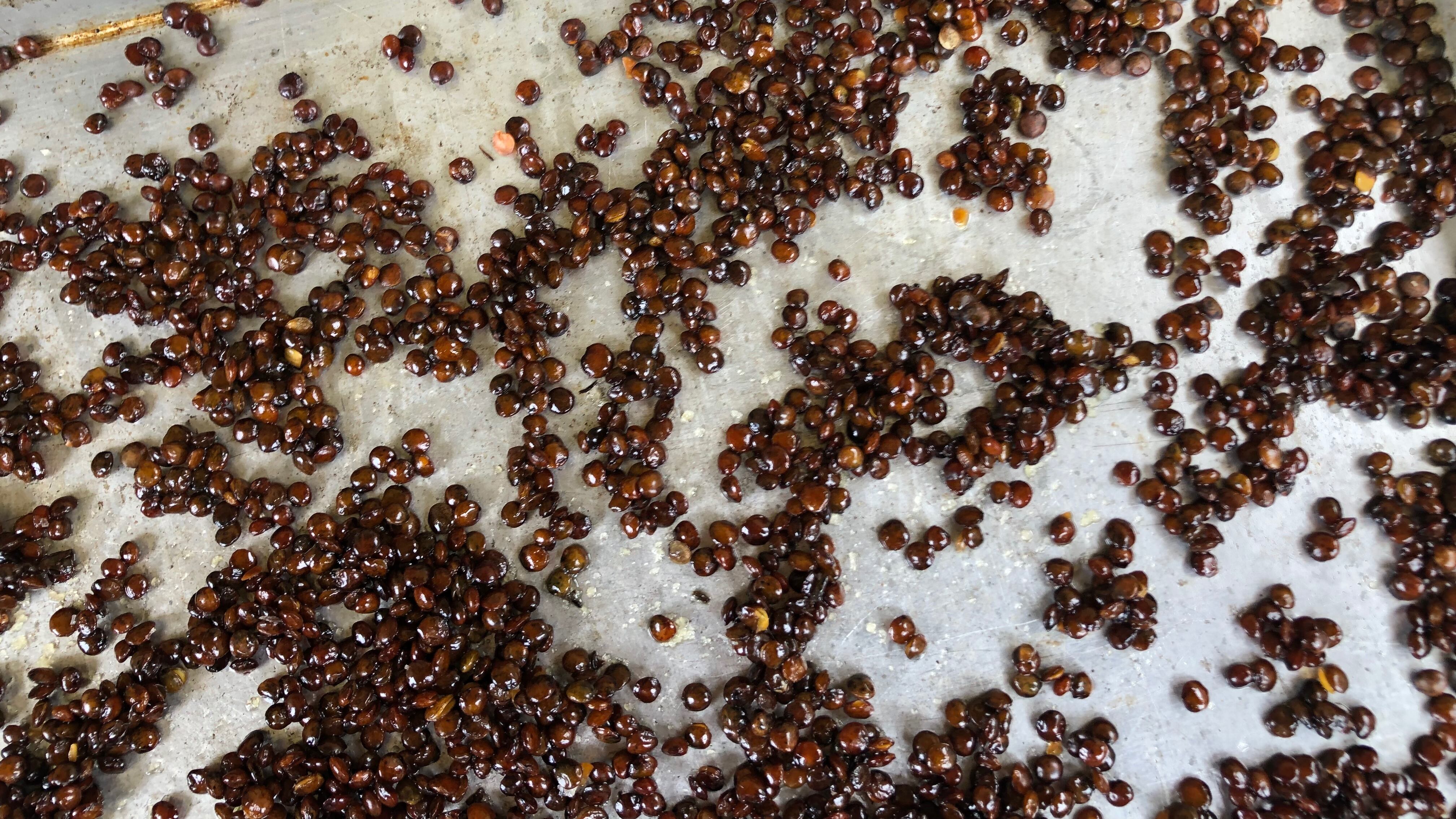Jim Dixon wrote about food for WW for more than 20 years, but these days most of his time is spent at his olive oil-focused specialty food business Wellspent Market. Jim’s always loved to eat, and he encourages his customers to cook by sending them recipes every week through his newsletter. We’re happy to have him back creating some special dishes just for WW readers.
You probably already know why you should be eating more lentils. Along with beans they’re part of the very tasty, incredibly healthy, and curiously named food group called pulses. The whole bean and bean-adjacent family is chock full o’ nutrients and are the No. 1 food linked to longevity, according to the people who research Blue Zones, the regions where people live the longest. They’re also packed with protein (No. 2 plant source behind soybeans), fiber, polyphenols (especially beneficial phytonutrients; here’s why you eat more), along with vitamin A, vitamin K, folate, iron, and zinc.
Lentils also cook quickly. If your excuse is that you don’t have a few hours to cook beans, the 20-30 minutes it takes to deliver a bowl of lentils don’t give you anywhere to hide. And while a simple bowl of lentils like the ones we ate in Italy can be very tasty, the tiny legumes love other flavors and lend themselves to all kinds of more complex dishes.
These crispy roasted lentils take the lens-shaped pulse in another direction. Soaked, drained and quickly cooked in the oven leaves the beans crunchy on the outside and tender on the inside. They add texture to salads or cooked vegetables, and they make a nice snack on their own. While the plain olive oil and salt version below is good, you can add spices for even more flavor.
You need to start the right lentils. Red, white and yellow lentils almost always have their hulls removed in a process called decortication, and decorticated lentils cook more quickly and usually get a little mushy. Green and brown lentils usually still have their hulls and retain their shape after cooking, but not always. To be sure you’ve got nondecorticated lentils, the ones with hulls intact, look for French green lentils (often called du Puy after the region where they’re grown in France, although lots are grown here in the Pacific Northwest), Italian or Spanish-style brown lentils (also grown locally) or the black lentils called beluga since they look a bit like caviar.
Once you’ve got them, put a cup or more in a bowl and add enough water to cover them by a couple of inches. Let soak overnight or at least for a few hours, then drain using a colander or mesh strainer. Put them back in the bowl, add a few glugs of good olive oil and a generous sprinkle of kosher-style salt, then spread in a single layer on a sheet pan.
Pop them in a 400-degree oven for about 20 minutes, then give them a stir and taste one to see if they’re getting crispy. If not, cook for another 10 minutes and check again, repeating as needed to get to the desired stage of crunch. Once they get there, let them cool completely, then transfer to a container and store in the fridge for up to a week.

